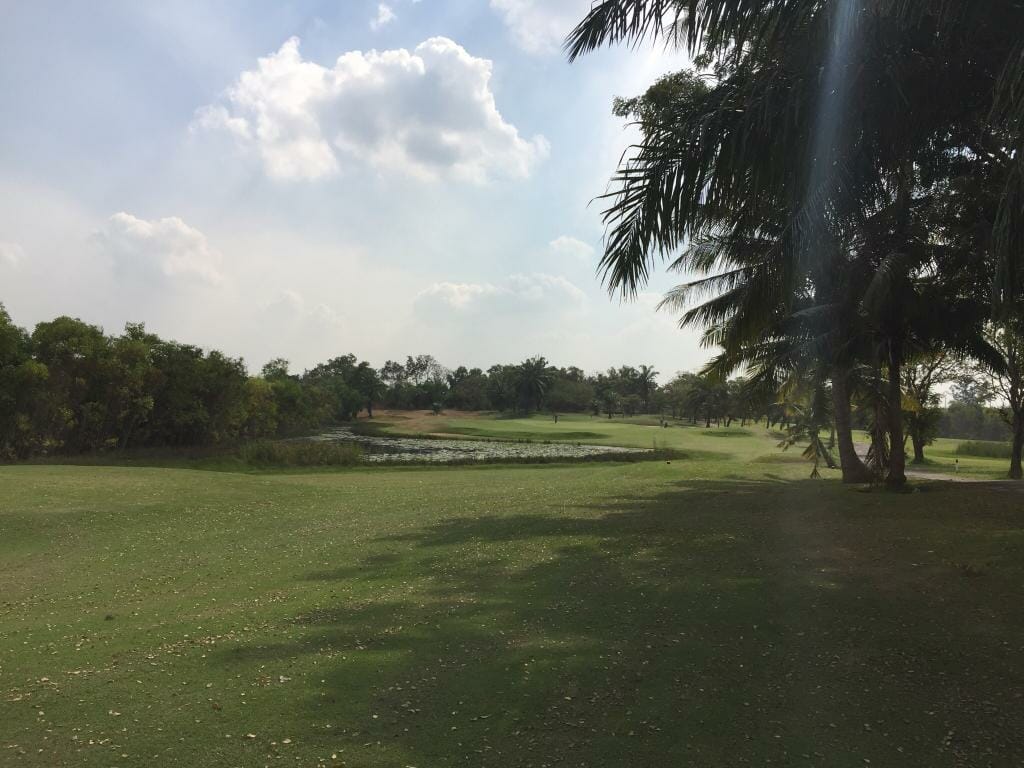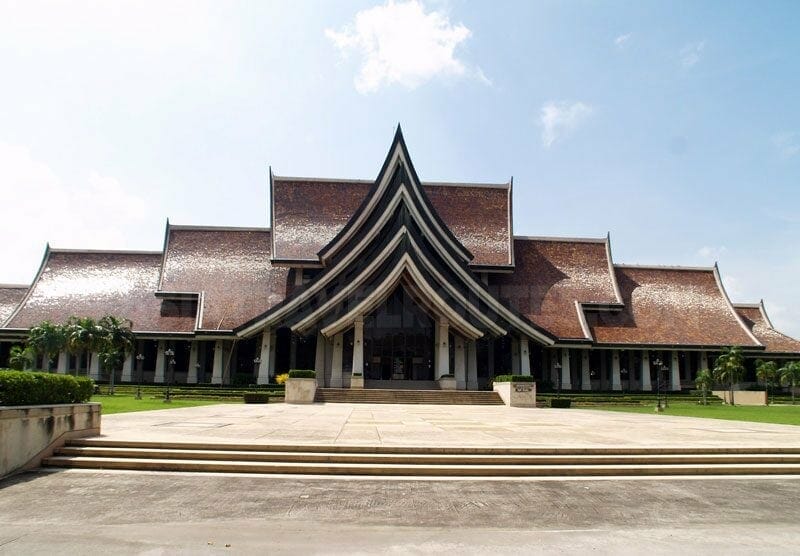The Royal Palace of Ayutthaya, which is now known as the Old Palace, is situated next to the northern section of the city wall. King Borom Trailokanath turned the palace, which was built in 1350 by King U-Thong, the first sovereign of the kingdom, into a monastery (Wat Phra Si Sanpet) in 1448 when he declared the three grand wooden prasats built by King U-Thong as a phuttawat or religious zone. King Borom Trailokanath then extended the palace grounds further north towards the Lopburi River, which was then used as the city’s moat. Several halls have been built since then. The places of interest in the Royal Palace are as follows:
Sanphet Prasat Hall
King Borom Trailokanath built this hall which was used as a reception hall for foreign visitors as a sister to the Benjarat Maha Prasat Hall. This prasat-style hall had long porticoes both at the front and the back, with shorter ones on the sides and a small Mondop situated on a mini balcony on the front portico. Tin sheets covered the roof and bralee or small spikes decorated its ridges. In addition, there was a tall spire on top of the roof. On both sides of this hall were stables that housed the white elephants. When Ayutthaya fell to the Burmese the hall was burnt down and only its brick and mortar foundations survives. King Rama IV, desirous of honoring the Kings of Ayutthaya, sent a team of officials from Bangkok to built a small prasat on the foundation of Sanphet Prasat Hall and planned to install a plaque inscribed with the names of all Ayutthaya’s kings. However, he died before the construction was completed. In 1907 King Rama V had the unfinished prasat pulled down and built a ceremonial pavilion instead.
Chakawat Paichayon Hall
Trimuk Hall
This building, which is believed to be the garden house inside the inner court, is located behind Sanphet Prasat Hall but its date of construction is unknown. The name was first mentioned in the reign of King Borom Rachathirat II in 1427 when it was destroyed by fire. It is believed that the original hall was a wooden structure built on top of a plain foundation and the floor was covered with terracotta slabs. It was a long twin building similar to Sanphet Prasat Hall. The original foundation is still visible. When King Rama V celebrated the 40th anniversary of his coronation in 1907 he had wooden models of various Ayutthayan halls built on top of the original sites and one of which was built on top of the foundation of Trimuk Hall. In addition, when King Rama VI and King Rama VII ascended to the throne they conducted religious rites in honor of the former Kings in Trimuk Hall and in 1953, the Fine Arts Department renovated the Hall.


